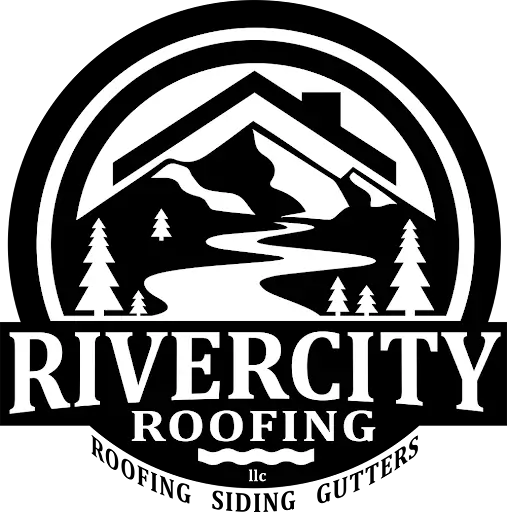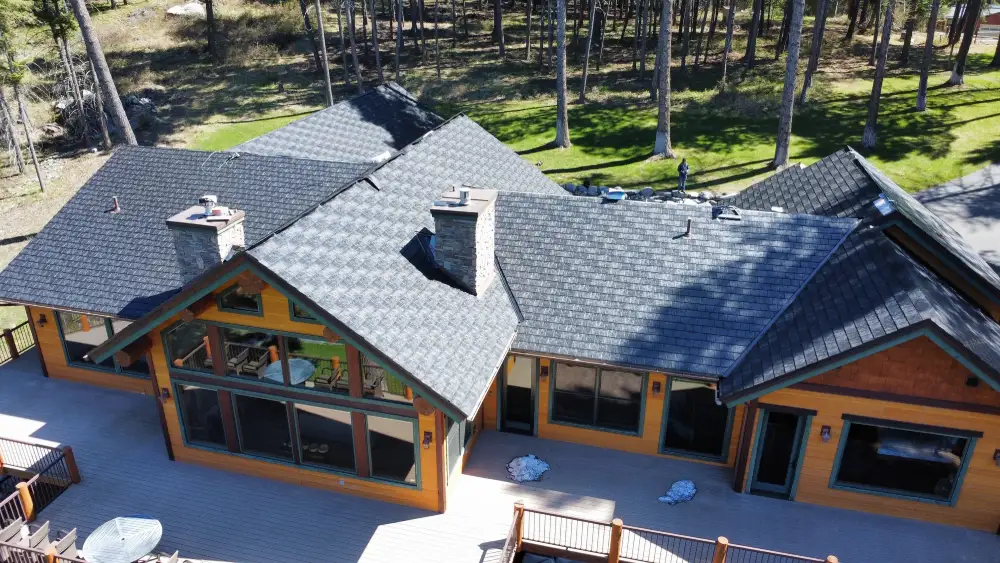Understanding the timeframe for a roof inspection is crucial for homeowners and property managers alike, as it plays a pivotal role in the ongoing roof maintenance process. A common question that surfaces in this context is, “How long does a roof inspection take?” The answer is not straightforward, as several factors can influence the duration. Given the significant role that timely inspections play in preempting costly repairs, recognizing the variables that determine the inspection period is essential. This knowledge not only aids in planning and budgeting for maintenance but also ensures that the property remains in prime condition through proactive measures. Scheduling a professional roof inspection ensures thorough and accurate assessments.
This article delves into the key factors that affect the duration of a roof inspection, emphasizing the importance of a comprehensive evaluation. Hiring a Reputable Roofing Company for inspections and maintenance ensures quality and reliability.
Factors That Affect Inspection Duration
Several factors can significantly influence the duration of a roof inspection. Understanding these can help homeowners and property managers estimate the time required for a thorough roof check. Different roofing materials, such as asphalt shingles, metal, and tile, can influence the time required for a thorough inspection.
Roof Size and Complexity
The size of the roof is a primary factor affecting the inspection time. Larger roofs naturally require more time to assess comprehensively. Additionally, the complexity of the roof design also plays a crucial role. Roofs with multiple dormers, valleys, or intricate designs, such as gable or hip-style roofs, may take longer to inspect due to the detailed attention required for each unique element. Different materials, such as asphalt shingle roofs and metal roofs, can also add to the complexity and time required for inspection.
Weather Conditions
Weather conditions at the time of inspection can greatly impact the duration. For instance, inspections conducted during adverse weather conditions such as rain or heavy snowfall may be hindered, as these conditions can conceal problem areas or make the roof slippery and dangerous to navigate. Conversely, clear and mild weather provides ideal conditions for a swift and safe inspection.
Inspector’s Experience
The inspector’s experience level also influences the inspection time. Seasoned professionals can often conduct thorough inspections more quickly due to their ability to efficiently identify and assess common issues and signs of damage without compromising the quality of the inspection.
Accessibility of Roof
Accessibility is another critical factor. Roofs that are difficult to access due to their height, the steepness of the pitch, or obstacles around the building require more time for safe and careful examination. Factors such as the surrounding environment and architectural features like skylights and chimneys can further complicate access and extend the duration of the inspection.
Age, Condition, and Roofing Material of Roof
Older roofs or those in visibly poor condition may necessitate a more detailed inspection process. Knowing when to replace your roof is crucial, especially for older roofs. Aging materials and visible damage, such as missing shingles or leaks, typically demand a closer, more meticulous examination to accurately assess the extent of damage and the necessary repairs, thus prolonging the inspection process.
Understanding these factors helps in planning and preparing for roof inspections, ensuring that adequate time is allocated for a comprehensive evaluation by professional roofers. It is also important to understand the lifespan of different roofing materials to determine the need for a roof replacement.
Importance of a Thorough Inspection
Regular roof inspections are crucial in mitigating potential larger issues that may otherwise go unnoticed until they become costly or hazardous. By identifying and addressing minor problems early, homeowners can prevent significant damage and ensure the safety and longevity of their roofs. Having your roof inspected regularly is essential to prevent costly repairs and maintain the overall health of your home.
The cost of a roof inspection can vary widely, ranging from as low as $75 to as high as $800. Factors influencing roof inspection cost include the methods used, location, access availability, and the specific services provided by the roofing company.
Preventing Bigger Issues
A thorough inspection helps catch early signs of damage, such as small leaks, missing shingles, or structural weaknesses. Addressing these issues promptly can prevent them from escalating into more severe problems, such as major leaks or structural failures, which can be much more expensive and challenging to repair.
Safety and Compliance
Regular inspections ensure that the roof meets safety standards and complies with local building codes. This is particularly important in areas prone to severe weather, where a compromised roof can significantly increase the risk of injury or property damage. Inspections also help maintain a safe environment by identifying potential hazards like weakened structures or damaged materials.
Ensuring Longevity and Performance
Thorough inspections contribute to the longevity and optimal performance of a roof. Inspectors can identify areas that require maintenance or minor repairs, which helps prolong the roof’s life and maintain its effectiveness in protecting the home from weather and external elements.
Insurance and Resale Value
Regularly inspected and well-maintained roofs are more likely to be covered by homeowners’ insurance in the event of damage. Additionally, a well-maintained roof enhances the overall value of the property, making it more attractive to potential buyers. This can be particularly beneficial when selling the home, as buyers often consider the condition of the roof when making a decision.
By investing in regular, thorough roof inspections, homeowners not only enhance the safety and functionality of their homes but also contribute to the overall financial health of their property investment.
Detailed Steps of a Roof Inspection
Preliminary Visual Check
A roof inspection begins with a preliminary visual examination from the ground or an accessible point. This initial step involves looking for obvious signs of damage, such as missing or broken shingles, noticeable sagging, and visible wear and tear. Using binoculars can aid in identifying issues without the immediate need to climb onto the roof.
Interior Roof Inspection
The next step involves inspecting the interior aspects of the roof which include the attic and any crawl spaces. Professionals look for water stains, mold, and other indicators of leaks that suggest a breach in the roof’s defenses. The condition of insulation is also assessed to ensure it is dry and intact, which helps maintain the roof’s structural integrity and energy efficiency.
Comprehensive Roof Walkover
Following the interior inspection, a thorough examination of the roof surface is conducted. Inspectors will check different types of roofing materials, such as asphalt roofs and slate roofs, for signs of damage. Safety is paramount, so inspectors use ladders, harnesses, and other safety equipment to access the roof. They walk the entire roof area to inspect for damage, focusing on shingles, flashing, gutters, and structural elements. Particular attention is given to shingle conditions, such as checking for cracks, curling, or blistering, which are early signs of potential issues. Specific issues that can be found include granule loss and storm damage in asphalt roofs, as well as natural wear in slate roofs.
Detailed Damage Assessment
During the roof walkover, each component is closely examined. Inspectors look for problems such as curled or missing shingles, dents in flashing, and clogged gutters. The integrity of chimneys, vents, and skylights is also evaluated for any signs of damage or leakage. This detailed assessment helps identify any immediate repairs that might be necessary to maintain the roof’s effectiveness.
Compiling the Report
After the inspection is complete, the inspector compiles a detailed report documenting the roof’s condition. This report includes findings from both the visual checks and the comprehensive walkover, supported by photographs and detailed notes. The report outlines the type and extent of any detected damage, provides an assessment of the overall roof condition, and includes recommendations for necessary repairs or maintenance. This document is crucial for homeowners to make informed decisions regarding roof repairs or replacements.
Advantages of Professional Roof Inspection
Expertise and Experience
Professional roof inspections are conducted by experienced roof inspectors who bring a wealth of knowledge to every evaluation. Their expertise allows them to identify issues that might not be apparent to the untrained eye. This includes spotting potential hazards such as electrical problems, structural weaknesses, and fire risks, which are crucial for maintaining the safety and security of the property.
Use of Specialized Tools and Roof Inspection Cost
Inspectors utilize a variety of specialized tools that enhance the accuracy and efficiency of the inspection. Tools such as infrared cameras, moisture meters, and drones equipped with thermal imaging cameras play a pivotal role in detecting hidden problems like moisture accumulation and insulation defects, which might otherwise go unnoticed.
Thorough Examination
A professional inspection involves a comprehensive assessment of the roof’s structure, materials, and overall condition. This thorough examination ensures that all aspects of the roof are evaluated, from the shingles and flashing to the gutters and downspouts. Such detailed scrutiny helps identify minor issues before they escalate into major repairs, thereby prolonging the lifespan of the roof.
Legal and Insurance Compliance
Professional inspections ensure that the roof meets all relevant safety standards and building codes, which is essential for legal compliance and insurance purposes. Hiring a reputable roofing contractor can ensure compliance with these standards and codes, preventing frequent roof replacements. Having a well-documented inspection can significantly aid insurance claims, especially in proving that the roof was in good condition prior to any damage, thus potentially lowering insurance premiums and facilitating claims processing.
Conclusion
The duration of a roof inspection can vary depending on various factors, such as the size and complexity of the roof, as well as any potential issues that may need further investigation. Signs indicating the need for a new roof, such as water damage or leaks, and the importance of proper installation and inspection cannot be overstated. It is crucial to schedule regular roof inspections to ensure the structural integrity and longevity of your property. By understanding the essential insights of how long a roof inspection takes, property owners can make informed decisions when it comes to maintaining and protecting their investment in the long run.
To aid in this endeavor, you can schedule a free roof inspection to ensure your roof remains in optimal condition, encapsulating our discussion’s core message and underscoring the importance of proactive property management. Homeowners should refer to an ultimate roof inspection guide for comprehensive advice on maintaining their roofs.


